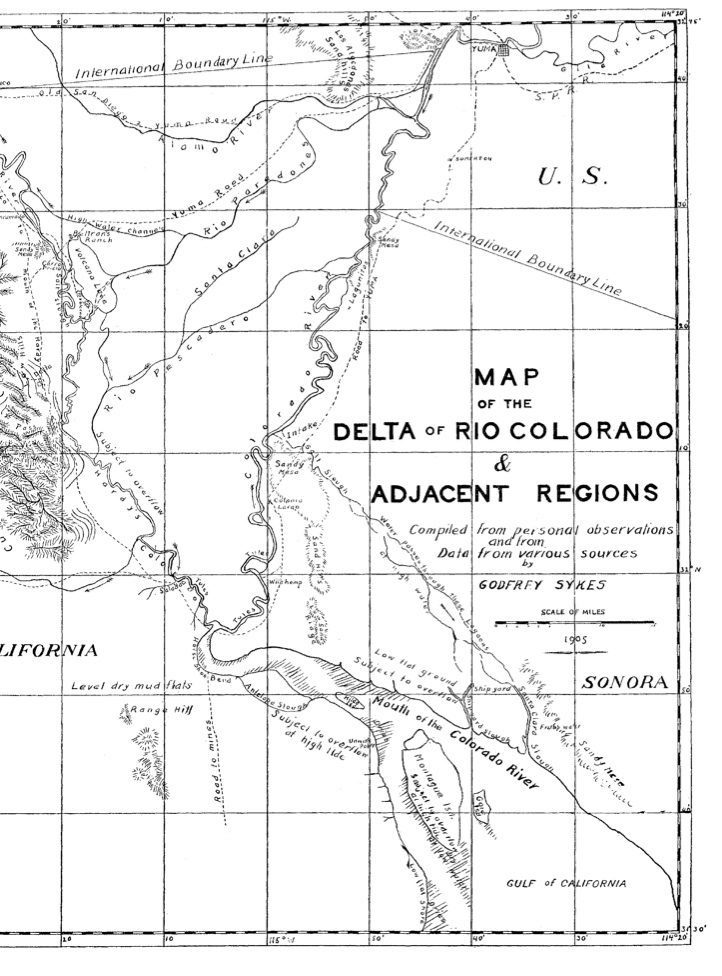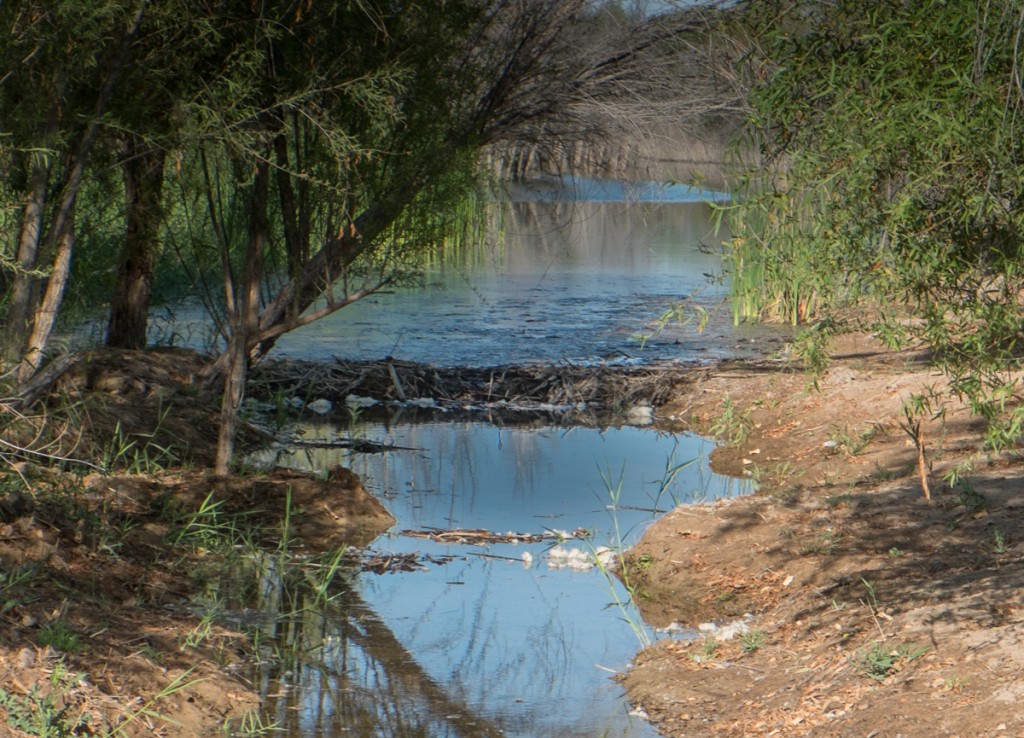When Daniel Trembley MacDougal of the New York Botanical Garden rode a flood pulse through the Colorado River Delta in 1905, he found a puzzling landscape – one of the most arid regions of North America sliced through by “swampy jungles”. At a time when beaver was being trapped into oblivion elsewhere, it was a landscape that seemed to MacDougal to offer hope:
The area actually irrigated by the river in normal low water and flood … is surrounded on all sides by desert and salt water, and is in reality a biological island….
The quantity of food furnished by the swampy jungles is sufficient to support a vast amount of native animal life, and furnishes inviting feeding grounds for migrating birds. The countless millions of young willow and poplar shoots supply food for the beaver, which bids well to hold out long in the impassable bayous and swamps against the trapper foe.
Of course it wasn’t trapper foes who reduced the delta’s beaver population but dams upstream that choked off the “swampy jungles” and “impassable bayous”. But a survey done in the 1990s by Eric Mellink and Jaime Luevano found remnant beaver populations did hold out, sometimes even when the only water available was standing, stagnant pools. As long as there were willows and cottonwoods (MacDougal called them “poplars”) Mellink and Luevano found beavers.
When I toured the Laguna CILA (pdf) habitat restoration site in the delta last month, before the Minute 319 environmental pulse flow arrived, we saw a little beaver dam:
(Thanks to Steve Nelson for pointing me to the MacDougal paper.)



Pingback: Another Week of Climate Disruption News, May 4, 2014 – A Few Things Ill Considered
Pingback: Blog round-up: Water as seen through dolls and wine barrel fountains, lifeblood, groundwater, almonds and more … » MAVEN'S NOTEBOOK | MAVEN'S NOTEBOOK